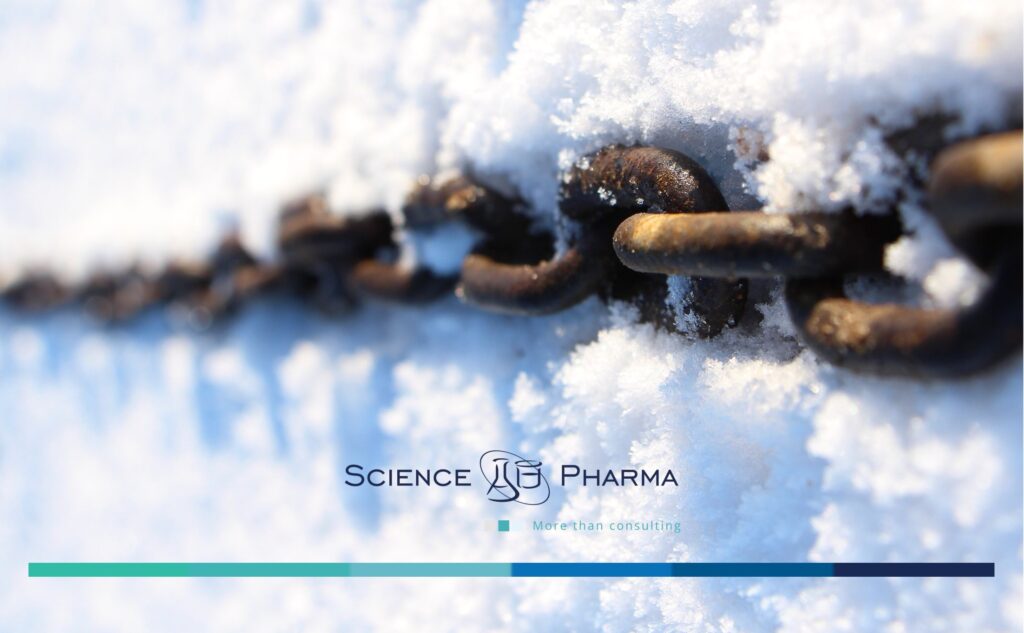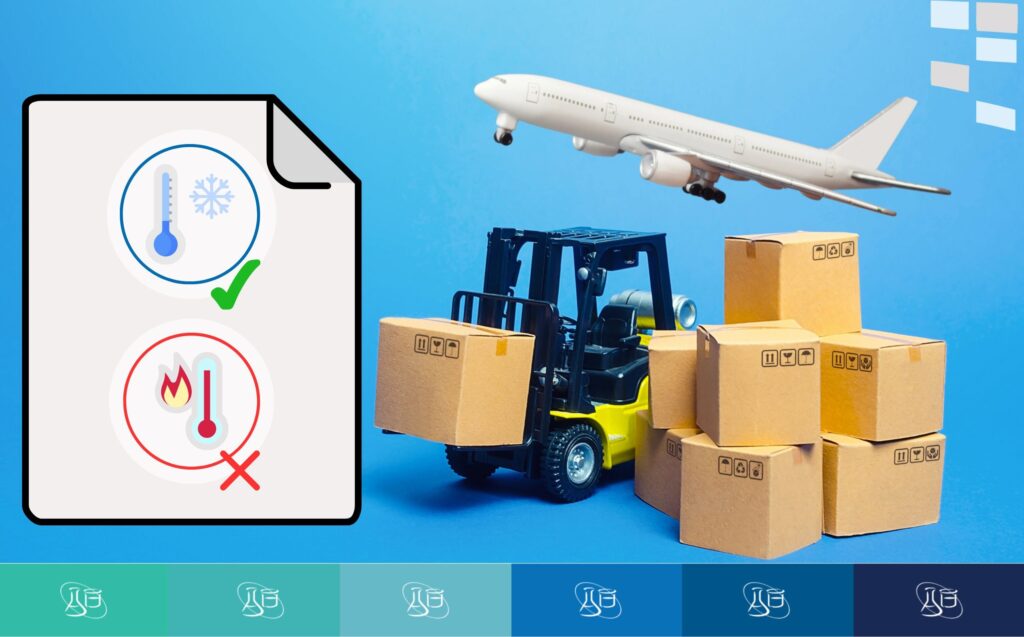In the summer period, as temperatures rise, ensuring the safety of medicinal products becomes important. High temperatures may significantly affect product quality, leading to serious consequences for patient safety and regulatory compliance. Therefore, the optimization of the cold chain supply is a key element of the strategy for every pharmaceutical company. This article discusses the importance of cold chain management in the pharmaceutical supply chain, the challenges faced by companies, and proposes process optimizations to maintain the highest standards of safety of drug products. Additionally, we will review specific standards and regulations governing pharmaceutical logistics, ensuring patient safety and compliance with regulatory requirements.
The Crucial Role of Cold Chain Supply Management in Pharmaceuticals
Pharmaceuticals should be stored and transported in environments that are carefully controlled regarding temperature, humidity, and other environmental factors. These products often require specific temperature ranges to preserve their quality and efficacy, which are critical for patient safety. Failure to maintain the correct conditions can lead to degradation of the product, potentially rendering it ineffective or unsafe.
Standard Temperature Ranges:
- Cold Chain Products: These require refrigeration, typically between +2°C and +8°C, or freezing at -18°C or lower.
- Controlled Room Temperature (CRT) Products: Many pharmaceuticals must be stored at room temperature, between +15°C and +25°C.
- Warm Chain Products: Some biologics and specialty medicines may require higher temperatures, up to +30°C or even higher, depending on their specific stability profiles.
Selecting the packaging and transport methods depends on the product’s temperature sensitivity, the duration of transit, environmental conditions, and the specific regulatory requirements, such as those from the International Safe Transit Association (ISTA) or local regulatory authorities.
Key Steps in Cold Chain Logistics
Effective cold chain logistics involves several crucial steps:
- Manufacturing and Packaging: temperature-sensitive products should be packaged with insulation to ensure stable conditions throughout the supply chain.
- Storage: Products must be stored in facilities equipped to maintain necessary temperatures, whether refrigerated or ambient. Advanced HVAC systems and temperature monitoring ensure consistent conditions
- Transportation: Temperature must be maintained during transport using refrigerated trucks, controlled containers, or thermal packaging. Real-time monitoring systems track conditions, with any deviations documented for compliance.
- Distribution and Delivery: Use temperature-controlled methods, like specialized vehicles. Proper training of personnel minimizes the risk of temperature deviations.
Throughout all these stages, continuous monitoring and recording of temperature and humidity data are vital. This not only helps in maintaining the quality and efficacy of the products but also ensures compliance with strict regulatory requirements, protecting both the company and the end consumer.

Pharmaceutical Products Packaging in Temperature-Controlled Supply Chain Management
The primary goal of temperature-controlled packaging is to maintain the specified temperature range for pharmaceuticals throughout the supply chain. Unlike cold chain packaging, which focuses on keeping products cool or frozen, temperature-controlled packaging can also include solutions for maintaining room temperature or slightly elevated temperatures, depending on the product’s requirements.
- Reefer Containers: These containers are equipped with built-in power units to maintain consistent temperatures, whether cold or at room temperature, during transportation. They are frequently used for large shipments of temperature-sensitive items.
- Thermal Packaging: Thermal packaging materials, such as insulated boxes or containers, are used to protect products from temperature fluctuations during transit. Depending on the product’s needs, thermal packaging can maintain temperatures at cool, ambient, or slightly elevated levels.
- Active Thermal Packaging: This type of packaging includes temperature control mechanisms, such as heating or cooling elements, to actively maintain the required conditions. It is useful for products that need to be kept at specific temperatures that differ from ambient conditions.
- Temperature Control Materials: Gel packs, phase change materials (PCMs), and other cooling or warming agents can maintain the necessary temperature within the packaging. For example, PCMs can help sustain a stable temperature in both cold and warm environments.
Temperature Monitoring Systems
Effective temperature control in the supply chain requires precise documentation and monitoring of conditions at every stage. Advanced monitoring systems and data loggers record temperature, humidity, and other relevant environmental factors in real-time. This data is critical for compliance with regulatory standards and for providing a clear audit trail.
Challenges and Solutions
- Sensor Calibration: Regular calibration of sensors is essential to ensure accurate data. Any drift in sensor accuracy can lead to incorrect temperature readings, potentially compromising product safety.
- Data Integration: Integrating data from multiple sources into a centralized system allows for comprehensive monitoring and quick response to any issues that arise during storage or transport.
Standards and Regulations in the Pharmaceutical Supply Chain
To ensure the integrity and safety of medicinal products, the pharmaceutical industry adheres to several key standards and regulations such as:
Good Distribution Practice (GDP) guidelines ensure that products are consistently stored, transported, and handled under appropriate conditions, including controlled temperature environments, as required by the product specification.
Good Manufacturing Practice (GMP) requirements include stringent controls over the production environment, including temperature control during manufacturing and packaging processes, to ensure the safety, quality, and efficacy of pharmaceutical products.
European Medicines Agency (EMA) guidelines, harmonized with GDP, ensure that all medicinal products distributed in the EU meet the highest safety standards. Compliance with these regulations is crucial for market access and patient safety. To learn more, we invite you to visit EudraLex – Volume 4 – Good Manufacturing Practice (GMP) guidelines.

Optimization of the cold chain supply system
Optimization of the cold chain supply system is crucial for ensuring safety of medicinal products. Implementation of several fundamental principles can significantly improve both the efficiency and safety of logistical processes:
- Supply chain flow control: Continuous monitoring and management of product flow within the supply chain are critical. Effective control systems help quickly detect and rectify any deviations from required conditions.
- Data collection and information management: Accurate tracking and management of information related to inventory, transportation and storage conditions ensure a rapid response to potential issues, minimizing the risk of product degradation.
- Improvement of transportation and storage: The use of modern refrigeration and temperature monitoring systems is key to maintaining proper storage and transport conditions. These technologies allow for real-time tracking and prompt action when necessary.
- Optimization of the procurement process: Close cooperation with suppliers to optimize supply processes allows for better inventory management and minimizing the risk of supply disruptions. Selected suppliers should meet specific requirements to ensure proper storage of medicinal products.
- Implementation of rigorous purchasing policy: The control of purchasing processes and selecting trusted can reduce costs and increase supply chain efficiency. It is worth cooperating with suppliers, including service providers, who ensure the highest standards.
- The use of performance indices: Regular monitoring and analysis of performance indicators help identify areas requiring improvement and implement corrective actions. The key indicators include delivery time, inventory levels and compliance with temperature requirements.
- Sharing information among supply chain stakeholders: Transparent communication and collaboration with supply chain partners allows for quick identification and resolution of issues, improving product safety. Effective cooperation and exchange of information between all participants in the supply chain are crucial for maintaining optimal processes.

The future of temperature control in pharmaceutical logistics
The future of logistics in the pharmaceutical industry will likely involve continued advancements in technology and processes. Key innovation paths include the development of advanced monitoring systems, the use of artificial intelligence to optimize the supply chain and introducting greener refrigeration solutions. A modern approach and improvement of existing processes are necessary to ensure the highest level of safety of medicinal products.
In conclusion, ensuring the safety of medicinal products during summer requires a robust and optimized cold chain supply system. By addressing challenges and implementing strategic optimizations, pharmaceutical companies can maintain the efficacy and safety of their products, safeguarding patient health.
Partnering with Expertise in Pharmaceutical Import and Supply Chain Management
With extensive experience in the import of medicinal products and holding an MIA (Manufacturer’s/Importer Authorization) license, at SciencePharma we are well-equipped to support our Clients in navigating the complexities of the pharmaceutical supply chain. Our expertise in managing supply chains ensures that products are handled with the utmost care, adhering to stringent standards and regulations. We are committed to leveraging our knowledge and skills to assist our Clients in optimizing their supply chains, ensuring the safe and efficient delivery of high-quality medicinal products. Whether you need guidance on compliance, logistics, or temperature control, we are ready to provide tailored solutions that meet your specific needs.


